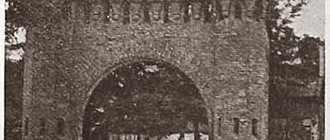City in Smolensk region, Russia
| Velizh Velizh | |
| City [1] | |
| In the center of Velizh | |
| Coat of arms | |
| Location of Velizh | |
| Velizh Location of Velizh Show map of Russia Velizh Velizh (Smolensk region) Show map of Smolensk region | |
| Coordinates: 55°36'N 31°11'E / 55.600°N Latitude 31.183°E / 55.600; 31.183 Coordinates: 55°36'N 31°11'E. / 55.600°N 31.183°E / 55.600; 31.183 | |
| A country | Russia |
| Federal subject | Smolensk region [1] |
| Administrative region | Velizh district [1] |
| urban village | Velizhskoe [1] |
| Based | 1536 |
| Region[1] | |
| • General | 226.62 km 2 (87.50 sq mi) |
| Height | 160 m (520 ft) |
| Population (2010 Census) [2] | |
| • General | 7 620 |
| • Evaluate (2018) [3] | 6 788 ( -10,9% ) |
| • Density | 34/km2 (87/sq mi) |
| Administrative status | |
| • Capital from | Velizh district [1], urban settlement Velizhskoye [1] |
| Municipal status | |
| • Municipal district | Velizh municipal district [4] |
| • Urban village | Urban settlement Velizhskoye [4] |
| • Capital from | Velizh municipal district [4], urban settlement Velizhskoye [5] |
| Timezone | UTC+3 (MSK[6]) |
| Postal code [7] | 216290, 216291 |
| OKTMO ID | 66603101001 |
Velizh
(Russian: Velizh, Belarusian: Velіж; Polish: Wieliż; Lithuanian: Veližas) is a city and the administrative center of Velizh District in Smolensk Oblast, Russia, located on the banks of the Western Dvina, 134 km (83 mi) from Smolensk, the administrative center of the region. Population: 7,620 (2010 census); [2] 8,343 (2002 Census) ; [8] 9,146 (1989 census). [9]
History[edit]
At the end of the 14th century it was a border fortress of the Grand Duchy of Lithuania. Muscovy recaptured it in 1536, but was returned to Lithuania in the 1582 Truce of Yam-Zapolsky. The city was returned to Russia under the terms of the First Partition of Poland. The houses of Nikolai Przhevalsky and Alexander Rodzianko in the immediate vicinity of Velizh are open to the public as museums.
After the First Partition of Poland in 1772, the territory was included in the newly created Pskov Governorate, a gigantic administrative unit comprising the present-day Pskov Oblast and a large part of Belarus. After 1773, the territory belonged to the Velizh district of the Pskov province. In 1777 it was transferred to the Polotsk governorship. In 1796, the governorship was abolished and the territory was transferred to the Belarusian Governorate; from 1802 to the Vitebsk province. In the period from July to October 1812, Velizh was occupied by Napoleon's army advancing on Moscow. In 1924, the Vitebsk province was abolished, and the Velizh district was transferred to the Pskov province. [10]
In April 1823, Velizh was the site of a notorious blood libel incident, when local Jews were wrongly accused of murdering a Christian boy found dead in a field. Based on the testimony of a drunken prostitute, more than forty Jews were arrested, and in 1826 the synagogues were closed. Some of the accused were not released until 1835. [11] [12]
On August 1, 1927, the provinces were abolished and the Velizh region was formed with its center in Velizh. It belonged to Velikiye Luk Okrug in Leningrad Oblast. On June 17, 1929, the Velizh region was transferred to the Western Region. On July 23, 1930, the districts were also abolished, and the districts were directly subordinated to the region. On September 17, 1937, the Western Region was abolished and the district was transferred to the Smolensk Region. [13] During the Great Patriotic War, from July 1941 to September 1943, the Velizh region was occupied by German troops. [10]
Much of the city was destroyed during World War II. During the war, Velizh was occupied by the German army from July 14, 1941 to September 20, 1943. In September 1942, German occupation forces killed all but 17 of the city's 1,440 Jewish residents. [14] [15]
On February 1, 1963, during the failed Khrushchev administrative reform, the Velizh district was merged with Demidov, but on January 12, 1965 it was recreated. [13]
Velizh - the fortress of Ivan the Terrible
Today Keytown will tell you, dear readers, about the fortified city that has visited different states, provinces, regions and districts. Directly on the course of the Historical City - Velizh.
Velizh is another small, beautiful and ancient city in the Smolensk region. He celebrates his birthday on July 19th. The population of the Velizh region is 11,114 people (as of 01/01/2015).
Base
There is no consensus about who founded the city of Velizh - some claim that it was done by Lithuanians, others that it was done by Pskovites.
The official date of foundation is considered to be July 19, 1536, when on the border of the Moscow state, by decree of Ivan the Terrible, on the old Velizh settlement in Toropetsk district, the Velizh border fortress was built - three-timbered, oak, with 9 towers. However, in 1392, Velizh was mentioned in the chronicle of Bykhovts, when the Lithuanian prince Vitovt made a big campaign to conquer the lands of Smolensk and Moscow: “Great Prince Vitold went, gathered near the cities of Pskov: Velizh, the Red City...”. Also, Velizh was repeatedly mentioned among the border settlements during the Russian-Polish peace negotiations of 1503.
Name
There are several versions about the origin of the name of the city: from the Velizhka River, which flows into the Western Dvina, from the name Velya of the upper reaches of the Western Dvina River, from the vastness of the territories - “vel” - large, “izh” (“ezh”) - belonging to some object (in this case - to the river), i.e. a large settlement near the river.
Story
In the 15th century, Velizh had the status of the center of a vast volost within the Vitebsk Principality, as indicated by documents from the 15th century.
According to the peace treaty of March 26, 1503, Toropets went to Moscow, and the Velizh volost was divided in half: the eastern part along the Mezha River went to Moscow, and the western part remained in the Vitebsk Voivodeship. In April 1536, Ivan IV the Terrible issued a decree on the construction of the Velizh border fortress at the old Velizh settlement at the mouth of the Kanevets River.
Velizh, being a well-fortified city, was of great importance during this period for the defense of the Russian border. It is no coincidence that in 1538, the ambassadors of the Polish king Sigismund persistently demanded the liquidation of Velizh as a fortified point: “New towns... Zavolochye, Sebezh and Velizh, and he would have ordered those towns to be destroyed so that they would not exist. So our ruler wants a truce with your sovereign.” In 1569, an agreement was signed on the unification of Poland and the Grand Duchy of Lithuania into one state - the Polish-Lithuanian Commonwealth, the borders of which extended to the former Velizh governorship. In 1579, a new war between the Polish-Lithuanian Commonwealth and Russia was declared. Ivan IV ordered the Russian border to be strengthened over the winter. The garrison of the Velizh fortress was increased to 700 people.
In the summer of 1580, the Polish army, consisting of mercenaries - a large number of Cossacks, infantry, artillery, which played an important role in the capture of the Velizh fortress, moved up the Dvina. After the Livonian War, the city became part of the Polish-Lithuanian Commonwealth as an eldership within the Vitebsk Voivodeship. During this time, it was periodically transferred to Russia and the Polish-Lithuanian Commonwealth after successive truces (1582, 1587, 1597, 1602, 1619, 1634) concluded by them with each other.
On September 23, 1654, Russian regiments occupied the city of Smolensk. Velizh found itself in the rear of the Russian army, which created unique difficulties for it. Therefore, Tsar Alexei Mikhailovich sends Velizh a letter from Smolensk with the conviction to surrender the city without bloodshed. Having captured Velizh, the tsar issues an order for a further attack on Lithuania.
Only in 1772, after the partition of Poland, Velizh finally became part of Russia as a city of the Polotsk governorship of the Pskov province and Vitebsk province. In the 18th century, the city lost its military significance and existed as a merchant city trading in timber, flax, grain, hemp and other goods.
With the beginning of the Patriotic War of 1812, Velizh was chosen by Russian troops as a place for storing ammunition and food, as well as for rest and treatment of the sick and wounded.
On June 16, 1812, the French entered Vitebsk without a fight. General Ermolov gave the order to evacuate food from Velizh to Smolensk. Early in the morning of July 18, cavalry troops under the command of Viceroy Eugene Beauharnais burst into Velizh, cutting down some of the recruits, capturing Velizh, settled in the best houses and celebrated the victory for 2 weeks in a row. At the end of July, leaving their garrison in the city, French troops moved towards Smolensk. In the Velizh district, the time has come for terror and robbery.
Russian troops under the command of A.Kh. Benkendorf, dressed in the colors of the French army, entered the city, killed the French who were there on vacation, and took Velizh, for which A.Kh. Benckendorff was promoted to general, and Sergei Volkonsky, the future Decembrist, to lieutenant colonel.
The occupation of the city lasted from July 18 to October 29, 1812. After it, there were 595 people left in Velizh instead of 5000, 99 houses instead of 700.
After the revolutionary events of 1917 until 1924, Velizh was part of the Vitebsk province of the Western Region; since September 27, 1937, it has been the regional center of the Smolensk Region.
On July 13, 1941, the area was occupied by fascist troops after suppressing the desperate resistance of Velizhans. During the battles in the Velizh area from July 12 to July 14, 1941, the Nazis lost a large number of soldiers and equipment, including 60 tanks.
Velizh was turned by the enemy into a large front-line supply hub. On January 30, 1942, battles for the city began on the southwestern outskirts of Velizh, then on the eastern outskirts. The enemy actually found himself surrounded by our troops.
By February 2, 1942, the small (right bank) side of the city was liberated; on the left - the enemy remained. Our troops and the enemy troops were separated by the Western Dvina. For 18 months, until September 20, 1943, the enemy repeatedly tried to push our troops to the east, but these attempts ended in failure. By the end of September 20, 1943, the troops of the 4th Shock Army, in a fierce battle with the enemy, which lasted 3 days, completely captured Velizh. All that remained of the city were the walls of destroyed houses - silent witnesses of fierce battles with the invaders.
On April 29, 1944, addressed to the Secretary of the RK VKP(b) M.I. Ermolaev and the chairman of the district executive committee I.Ya. Komandirov received a telegram from I.V. Stalin with an expression of gratitude for the 500 thousand rubles donated by the residents of the Velizh region for the construction of a tank column, 1300 thousand rubles for the defense fund, 18 thousand pounds of bread.
The feat of the victims is immortalized in 37 memorial places created in their honor, 10 streets of the city are named after the heroes. In honor of the heroes of Velizhan, the Alley of Heroes of the Soviet Union was created. A sacred place in the city is the Lidova Gora memorial, where about 10 thousand soldiers and officers are buried who gave their lives for the liberation of Velizh land. Every year on May 9 and September 20, mass events are held here with the laying of wreaths at the graves of the fallen. There are another 70 graves of soldiers of the 4th Shock Army in the area.
The Velizh district was formed in 1927 as part of the Leningrad region on the territory of the former Velizh district of the Vitebsk province. In 1929 it was transferred to the Western Region, and has been part of the Smolensk Region since 1937. In 1963 it was annexed to the Demidovsky district. Restored in 1965.
Attractions
- The ordinary buildings of the 19th century are partially intact.
- Remains of the fortress ramparts and ditches (1536).
- Settlement (no later than the 14th century).
- Church of the Exaltation (in Zarechye) (1869, weddings in the 1990s).
- Wooden Church of Cyril and Methodius (in the city center) (2000s).
- War memorials
Symbolism
The coat of arms of Velizh was approved when the city was part of the Polotsk governorship (September 21, 1781), which is why the coat of arms of Smolensk is not reflected on it. It repeats the coat of arms of Polotsk, but the lower field is divided by silver and scarlet rhombuses.
The coat of arms of 1781 is used as the modern coat of arms of Velizh.
Streets in the cities of Ivanovo, Kaliningrad, Vitebsk, Smolensk are named after the city of Velizh.
People
- Alexander Maksimovich Amosenkov (May 1, 1919 - January 27, 1993) - Soviet officer, participant in the Great Patriotic War, chief of intelligence of the 2nd division of the 473rd artillery regiment of the 99th rifle division of the 46th army of the 2nd Ukrainian Front, lieutenant . Hero of the Soviet Union (03/24/1945), reserve colonel.
- Ignatiy Petrovich Antonov (December 28, 1922, village Budnitsa, Vitebsk province - February 1, 2015, Minsk) - academician of the National Academy of Sciences of Belarus, corresponding member of the Russian Academy of Medical Sciences, Honored Scientist of Belarus, laureate of the State Prize of the Republic of Belarus, people's doctor of Belarus , honorary citizen of Minsk and Vitebsk.
- Andrei Onufrievich Bembel (born October 17, 1905, Velizh, Vitebsk province - died October 13, 1986) - Soviet sculptor, People's Artist of the Belarusian SSR (1955)[1], professor (1962). Participant of the Great Patriotic War.
- Alexander Efimovich Budykho (August 12, 1893 - April 19, 1950) - Soviet military leader, major general (1940), participant in the First World War, the Civil War and the Great Patriotic War. In 1941, he was captured by the Germans, collaborated with the Germans, joined the ROA, escaped from the Germans, was arrested in the USSR, and executed by court verdict.
- Marina Lavrentievna Popovich (Vasilieva; July 20, 1931, Leonenki village, Velizh district, Western region) - 1st class test pilot, Honored Master of Sports of the USSR, 102-time world record holder, colonel engineer. Doctor of Technical Sciences, professor, ufologist. Member of the Russian Writers' Union.
- Kirill Fedotovich Skvortsov (06/04/1902, Smolensk region - 02/04/1945) - Soviet soldier, participant in the Great Patriotic War, Hero of the Soviet Union, commander of the 266th Guards Army Anti-Tank Artillery Regiment of the 8th Guards Army of the 1st Belorussian Front, guard lieutenant colonel.
- Mark Semyonovich Nemtsov (November 23, 1900, Velizh, Vitebsk province - January 7, 1997, St. Petersburg) - Soviet chemist, one of the inventors of isoprene rubber, laureate of the Lenin Prize in 1967.
- Lev Romanovich Sheinin (1906-1967) - Soviet lawyer, writer and film screenwriter. Winner of the Stalin Prize, first degree (1950). Member of the CPSU(b) since 1929.
Economics [edit]
Industry[edit]
In 2013, 35% of the industrial output of the Velizh region was produced by textile industry enterprises, 17% by timber, 10% by food industry. Most of these enterprises are located in Velizh. [16]
Transport[edit]
Paved roads connect Velizh with Smolensk, Nevel via Usvyaty and Vitebsk. There are also local roads with bus traffic coming from Velizh.
The nearest railway station is in Rudna, on the railway connecting Smolensk with Vitebsk.
Velizh is a city, the center of the Velizh region. Population 9.1 thousand people (1998). The city is located on the banks of the river. Western Dvina at a distance of 116 km northwest of the regional center on the Smolensk-Nevel highway. The name apparently comes from the Old Slavonic name of the river Velya (“great”) (this, according to V.A. Zhuchkevich, was the name of the Western Dvina in the upper reaches in the past). The city, standing on a river with that name, received the name Velizh, where -izh indicates ownership. The exact date of the founding of the city has not been established with certainty. On the territory of the city, on the left bank of the river. The Western Dvina, at the confluence of the Konevets stream, is a settlement. The cultural layer is about 1.5 m thick. Velizh was mentioned as a fortified point at the end of the 16th century. “the chronicle of Bykhovets” in connection with the campaign of the Lithuanian prince Vitovt; The date of the city’s foundation is considered to be 1536, when, according to the entry in the “Royal Book,” Tsar Ivan the Terrible ordered the city to be built in the “Toropets district on the Velizh settlement.” Throughout the 2nd half of the 16th century. Velizh was located in the combat zone of the Russian-Polish wars.
In 1562, Velizh was burned by the army of Radziwill, who was making a campaign in the Moscow land, in 1568 - by the Vitebsk Cossacks. In 1580, the Polish army led by King Stefan Batory moved to the border regions of the country. The army of Chancellor I. Zamoyski marched to Velizh, the city was taken on the 5th day of the siege. Under the terms of the peace treaty soon concluded with the Polish-Lithuanian Commonwealth, Velizh remained part of the Polish-Lithuanian state. On March 20, 1585, Stefan Batory elevated Velizh to the eldership, declared various “privileges” and granted the city a coat of arms. This coat of arms consists of a shield of the Polish type of that time, with a figured frame. The height of the shield is equal to 9/8 of the width (from and to the ends of the teeth). The shield depicts: Field - light blue (heavenly color), Cross - eight-pointed - gold, Sword drawn under the cross in a horizontal position, point to the right - silver. The frame of the shield is silver.
In May 1655, Russian troops besieged Velizh, and on June 17, 1655, its “holder” Jan Domashevsky, the Velizh gentry and townspeople surrendered the city. After Velizh returned to Russia, a marina was built in it, which played a significant role in the country's foreign trade. The Moscow government provided residents of Velizh with a number of benefits. They were allowed, in particular, “to trade all kinds of goods duty-free, from Velizh down the Dvina River to Riga in all cities.” In 1678, Velizh became part of the Polish-Lithuanian Commonwealth, and in 1772 it was again returned to the Russian state. It received the rights of a district town in 1776. The annexation of the Velizh district to Russia determined the entire way of life of the Velizh residents. Instead of the Lithuanian-Polish one, a Russian system of government was formed, Lithuanian-Polish laws and rituals were abolished, and the coat of arms of Velizh, which was then part of the Polotsk governorship, was changed.
On September 21, 1781, the new coat of arms of Velizh was determined. It repeated the coat of arms of Polotsk. In the upper part of the shield there is an emerging (upper part) double-headed eagle on a golden background, in the lower part there is “Pursuit”, but the lower field is divided - the coat of arms on a diamond-shaped chess field of silver and red diamonds. The coat of arms consisted of a French-style shield. Shield height = 9/8 width. The bottom corners are rounded and there is a protruding funnel-shaped tooth in the center of the bottom. The shield is divided into two parts by a horizontal line. The top field is golden. It depicts a black double-headed eagle, half visible above the line, with outstretched wings, with two small crowns on their heads and a third large crown in the center above the small ones. The eagle's beaks are golden. Tongues and eyes are dark red. Crown hoop; teeth with balls - two arcs (hemispheres), a plate with balls and an eight-pointed cross at the top in the center of the crowns - gold. The pads (soft helmets, caps) are dark red velvet inside the crowns, partially visible at the top in two spaces between the arches and the plate, and at the bottom from under the hoop. The lower field consists of rhombuses connected to each other by angles: horizontally sharp and vertically blunt, red with red, silver with silver, alternating in color in rows. The diamonds depict a warrior in armor, in a helmet with a thick hanging brush, with a sword raised above his head in his right hand, on a horse galloping to the left - silver. The round shield on the warrior’s left hand is dark red, with two vertically located silver eight-pointed crosses on it. The saddle is dark red. The carpet under the saddle with three prongs is gold with a light blue border. The frame of the coat of arms is silver.
In the second half of the 19th century, a draft coat of arms of Velizh was drawn up according to the rules developed by B. Kene. The shield is divided chessboard with scarlet and silver; in the free part there is the coat of arms of the Vitebsk province, of which Velizh was a part since 1802. The shield was crowned with a silver tower crown; on the sides of the shield were placed golden ears of corn, tied with an Alexander ribbon. The coat of arms was not officially approved.
The coat of arms of 1781 is used as the modern coat of arms of Velizh.
Links[edit]
Notes[edit]
- ^ abcdefghi Resolution No. 261
- ^ a b Federal State Statistics Service (2011). All-Russian Population Census 2010. Volume 1 [All-Russian Population Census 2010, vol. 1]. All-Russian Population Census 2010 [All-Russian Population Census 2010] (in Russian). Federal State Statistics Service.
- "26. The size of the permanent population of the Russian Federation by municipalities as of January 1, 2022". Federal State Statistics Service. Retrieved January 23, 2022.
- ^ abcd Law No. 88-z
- Federal State Statistics Service. Federal Agency for Technological Regulation and Metrology. No. OK 033-2013 January 1, 2014 “All-Russian classifier of municipal territories. Code 66 603 101.” (Federal State Statistics Service. Federal Agency for Technological Regulation and Metrology. No. OK 033-2013 dated January 1, 2014. Russian classification of municipal territories. Code 66 603 101.
). - "On the Calculation of Time". Official Internet portal of legal information
. June 3, 2011. Retrieved January 19, 2022. - Post office. Information and computing center of OASU RPO. ( Post office
).
Search for postal service objects ( postal Search for objects
) (in Russian) - ↑
Federal State Statistics Service of Russia (May 21, 2004). The population of the Russian Federation, cities of the Russian Federation as part of federal districts, urban settlements, settlements, settlements, settlements is 3 thousand or more people. [Population of Russia, its federal districts , subjects of the Federation, districts, urban settlements, rural settlements - administrative centers and rural settlements with a population of more than 3000 people] (XLS). All-Russian Population Census of 2002 [All-Russian Population Census of 2002] (in Russian). - All-Union Population Census of 1989 Population of Union and Autonomous Republics, Autonomous Regions and Districts, Territories, Regions, Urban Settlements and Village District Centers [All-Union Population Census of 1989: Current Population of Union and Autonomous Republics, Autonomous Regions and Districts, Territories, Regions , districts, urban settlements and villages performing the functions of district administrative centers]. All-Union Population Census of 1989 [All-Union Population Census of 1989] (in Russian). Institute of Demography of the National Research University: Higher School of Economics [Institute of Demography of the National Research University: Higher School of Economics]. 1989 - via Demoscope Weekly
. - ^ a b Historical information (in Russian). Administration of Velizh region. Retrieved May 9, 2016.
- Jewish Virtual Library. Entrance to Velizh
- Avrutin, Evgeniy (2017). The Velizh case: blood libel in a Russian city
. Oxford: Oxford University Press. ISBN 9780190640521. - ^ ab Parfenov, Boris; Olga Khorenzhenkova. On the history of the formation of the Smolensk region (in Russian). Smolensk. Retrieved May 9, 2016.
- Jewish Telegraphic Agency. “Only seventeen Jews escaped the massacre carried out by the Nazis in the Russian city of Velizh.” September 9, 1942.
- https://yahadmap.org/#village/velizh-smolensk-russia.545
- Investment passport of the Velizh region (PDF) (in Russian). Administration of Velizh region. 2013. Retrieved April 28, 2016.
- Municipal budgetary cultural institution "Velizh Regional History Museum" (in Russian). Velizh Historical Museum. Retrieved May 9, 2016.
Sources [edit]
- Administration of the Smolensk region. Resolution No. 261 of April 30, 2008 “On approval of the registration of administrative-territorial units and territorial units of the Smolensk region,” as amended. Resolution No. 464 of June 27, 2014 “On amendments to the register of administrative-territorial units and territorial units of the Smolensk region.” Published: Database “Consultant-plus”. (Administration of the Smolensk region. Resolution No. 261 of April 30, 2008 “ On approval of the Register of administrative-territorial units and territorial units of the Smolensk region”
as amended by Resolution of June 27, 2014 No. 464 “
On amendments to the Register of administrative-territorial units of the Smolensk region"). Administrative-territorial units and territorial units of the Smolensk region
). - Smolensk Regional Duma. Law No. 88-z of December 2, 2004 “On granting the status of a municipal district to the municipal formation” Velizhsky district “of the Smolensk region, on establishing the boundaries of municipalities whose territories are part of it, and granting them temporary status,” as amended. Law No. 117-z of November 30, 2011 “On Amendments to the Regional Law” On granting the status of a municipal district to the municipal formation “Velizhsky District” of the Smolensk Region, on approving the boundaries of municipalities whose territories are part of it, and granting them the appropriate status "". Came into force on the date of official publication. Published: “Bulletin of the Smolensk Regional Duma and Administration of the Smolensk Region”, No. 12, part II, p. 359, December 5, 2004 (Smolensk Regional Duma. Law No. 88-z of December 2, 2004 “On assignment to a municipal entity” Velizhsky district "of the Smolensk region the status of a municipal district"
, "
On establishing the boundaries of municipalities that include the territory", "On assigning them the appropriate status"
as amended by the Law of November 30, 2011 No. 117-z "
On amendments to the regional law "On assigning the status of a municipal district to the municipal formation "Velizhsky district" of the Smolensk region "on the creation of a municipal formation. The boundaries of municipal formations, the territories of which are part of them, and on granting them the appropriate status
. " In force from the date of official publication. ).
Cities
City of Velizh
- a city in Russia, the administrative center of the Velizh district of the Smolensk region. The population as of the end of 2011 is actually 7.3 thousand people. The city is located on the Western Dvina River, 124 km from Smolensk. Velizh is located on the Nevel - Smolensk highway, and there is also a highway to Vitebsk. Bus service to Smolensk, Vitebsk, St. Petersburg. The distance to the Rudnya railway station is 93 kilometers. From 1945 to 2005, the Baranovskaya narrow-gauge railway, owned by the Velizh Timber Industry Enterprise, operated in the city and its environs. It did not have access to the main railway network. Until the 1990s, there was cargo and passenger shipping on the Western Dvina River.
OKATO code: 66203501 Founded: 1536 City since: 1536 Deviation from Moscow time, hours: 0 Geographic latitude: 55°36′ Geographic longitude: 31°12′ Height above sea level, meters: 160
Education in the city of
Velizh
The city has a number of secondary specialized, general education and preschool institutions. There are no institutions of higher professional education in the city, so future students go to other cities to enroll.
Economy of the city of
Velizh
Velizh is an important center for timber harvesting. Lespromkhoz, forestry enterprise, furniture factory.
Flax processing plant, branch of the Moscow Electrical Mechanisms Plant, dairy plant, bakery.
In the Velizh region, grain crops, flax, and potatoes are grown. They raise cattle and pigs.
Deposits of limestone, peat, glass sand, gravel.
History of the city of
Velizh
The territory of the future Velizh (Velizh volost) was part of the Smolensk principality, and then part of its inheritance - the Toropetsk principality. Together with the latter, in 1355 these lands were annexed to the Grand Duchy of Lithuania. In 1392, Velizh was mentioned in the chronicle of Bykhovets. Velizh was mentioned in Lithuanian chronicles back in 1403. After the unsuccessful campaign of Sigismund I in 1533, according to the treaty, Velizh went to the Moscow state. In April 1536, a decree was issued on the construction of fortresses on the old Velizh fortress (there were 4 of them in the city), called Castle Hill. In the royal book of Ivan the Terrible it is said about this: “In the summer of April 7044 (1536), on the 19th day, Grand Duke Ivan Vasilyevich and his mother Grand Duchess Elena ordered to build a city in the Toropets district on the Velizh settlement, the city of Velizh, and to complete the month of July, in the third year of his kingdom." This date is considered the official founding year of Velizh. The fortress was built by masters Ivan Rudak and Ivan Kolychev and in July 1536 it was erected in the form of three log buildings filled with clay. It had 8 (9) combat towers, two of which had entrance gates. A dam was built at the mouth of the Kanevets River, which made it possible to raise the water level in the deep ditches around the fortress. The slopes of the ditches were lined with logs and became slippery as the water rose. During the Livonian War of 1558-1583, the Lithuanians tried to take possession of the Velizh lands, but Prince Radziwill succeeded only in 1562. The Velizh settlement and surrounding villages were destroyed. In addition to the raids, epidemics were raging; scribe books indicate that “Velizh district lay almost completely empty.” According to the Yam-Zapolsky truce of 1582, Velizh went to the Polish-Lithuanian Commonwealth. In 1585, Velizh received a coat of arms: a golden cross, above it a naked sword, pointing east, on a blue shield of the European type. In 1655, during the Russian-Polish war of 1654-1667, Velizh was destroyed by Russian troops. In 1667, according to the Treaty of Andrusovo, Velizh went to Moscow, but in 1678 it was returned to the Polish-Lithuanian Commonwealth along with some other lands in exchange for the city of Kyiv. By the end of the 16th century, Velizh had lost its military-strategic significance and developed as the center of an extensive eldership as part of the Vitebsk Voivodeship. According to the first partition of Poland in 1772, Velizh finally became part of Russia. It was included first in the Pskov and then in the Polotsk province of the Vitebsk province, and from 1804 in the Vitebsk province. On September 21, 1781, Catherine II granted the city the Russian coat of arms. On July 14, 1941, the city was occupied by the Germans. On September 20, 1943, Velizh was liberated by the troops of the Kalinin Front during the Dukhovshchinsko-Demidov operation by the forces of the 4th Shock Army.
| Coat of arms of the city of Velizh - The shield is divided in a checkerboard pattern of scarlet and silver; in the free part the coat of arms of the Vitebsk province. The shield is crowned with a silver tower crown, on the sides of the shield there are golden ears of corn tied with an Alexander ribbon. The coat of arms was not officially approved. | Flag of the city of Velizh - not yet approved and therefore absent |
Symbolism
“The basis of the coat of arms of the Vyazemsky urban settlement is taken from the historical coat of arms of the district city of Vyazma, Smolensk province, Supremely approved on October 10, 1780, the true description of which reads: “He owns the coat of arms of Smolensk, as the inheritance of the eldest, the tribe of these Princes, that is: in the silver field, black cannon on a gold carriage. and on the cannon there is a bird of paradise, with a difference from the Smolensk coat of arms in its position on the top of the blue title.”
The cannons in the coat of arms symbolize the heroic past of the Smolensk land, which more than once fought back against foreign invaders.
Bird of paradise (depicted without legs) - symbolizes revival after wars, the desire for happiness and higher ideals. In addition, it is believed that it warns of danger.
A title (tournament collar) is a “sign of a junior” in heraldry (it is understood that a similar coat of arms without a title belongs to a subject senior in rank, position, relationship). The use of such signs in city heraldry is a distinctive feature of the Russian tradition. In this case, the title indicates the significance of Vyazma in the history of the formation of the region as one of the family inheritances of the ancient Smolensk reign and the role of Vyazma as the cradle of the famous princely family in the history of Russia.
Silver is a symbol of purity, openness, divine wisdom, and reconciliation.
Green color symbolizes nature, fertility, hope.
Gold is a symbol of the highest value, greatness, generosity, wealth, sunshine.
Azure symbolizes lofty aspirations, honor, devotion, truth, virtue.
Black color symbolizes prudence, wisdom, modesty, honesty."










